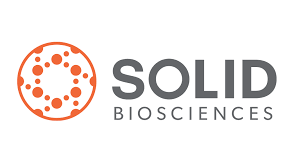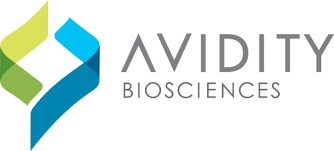Ablation
Cardiac ablation is a procedure that can correct heart rhythm problems (arrhythmias). Cardiac ablation works by scarring or destroying tissue in your heart that triggers or sustains an abnormal heart rhythm. In some cases, cardiac ablation prevents abnormal electrical signals from entering your heart and, thus, stops the arrhythmia.
ACEi
ACE inhibitors (Angiotensin-converting enzyme inhibitors) are medications that slow (inhibit) the activity of the enzyme ACE, which decreases the production of angiotensin II. As a result, blood vessels enlarge or dilate, and blood pressure is reduced.
Afib
Atrial fibrillation is an irregular and often rapid heart rate that can increase your risk of strokes, heart failure and other heart-related complications
AICD
An Automatic Implantable Cardioverter Defibrillator, (AICD), is a small electronic device that is implanted into your chest to monitor and correct an abnormal heart rhythm, or arrhythmia. These devices are used to treat serious and life-threatening arrhythmias.
ARBs
Angiotensin II receptor blockers (ARBs) are medications that block the action of angiotensin II by preventing angiotensin II from binding to angiotensin II receptors on the muscles surrounding blood vessels. As a result, blood vessels enlarge (dilate) and blood pressure is reduced.
ARNIs
Angiotensin Receptor-Neprilysin Inhibitors represent a newer category of medications for DCM. ARNIs are a combination of an ARB and a drug called Sacubitril. Like ACEI, ARBs, and Beta Blockers, ARNIs help improve the heart muscle function and improve survival. Neprilysin inhibitors are drugs that prevent the breakdown of an important and helpful hormone that combats the symptoms and effects of congestive heart failure. ARNIs combine the beneficial effects of the ARB and the Neprilysin inhibitor. The drug Entresto is a combination medication that falls into this category.
Arrhythmogenic cardiomyopathy
Arrhythmogenic right ventricular cardiomyopathy, or ARVC, is a type of cardiomyopathy that affects. the ventricles (lower pumping chambers) of the heart and causes arrhythmias (abnormal heart rhythms). It affects the right ventricle, and often also affects the left ventricle.
AV block
Atrioventricular (AV) block is partial or complete interruption of impulse transmission from the atria to the ventricles.
AV node
The atrioventricular node or AV node is a part of the electrical conduction system of the heart that coordinates the top of the heart. It electrically connects the atria and ventricles.
Beta blockers
Beta blockers, also known as beta-adrenergic blocking agents, are medications that improve your heart muscle function, sometimes to near normal levels. They work by blocking the effects of the hormone epinephrine, also known as adrenaline, which lets your heart muscle become healthier. They may also tend to reduce your blood pressure, which if elevated, is another beneficial effect.
BMI
Body Mass Index (BMI) is a person’s weight in kilograms divided by the square of height in meters.
Bradycardia
Bradycardia is a slower than normal heart rate. If you have bradycardia, your heart beats fewer than 60 times a minute.
CHF
Congestive heart failure is a weakness of the heart that leads to a buildup of fluid in the lungs and surrounding body tissues.
Chronic medical condition
Chronic diseases are defined broadly as conditions that last 1 year or more and require ongoing medical attention or limit activities of daily living or both.
CMR
Cardiac magnetic resonance imaging (MRI) uses a powerful magnetic field, radio waves and a computer to produce detailed pictures of the structures within and around the heart.
CPET
Cardiopulmonary Exercise Testing (CPET) is a non-invasive method used to assess the performance of the heart and lungs at rest and during exercise.
CRT
Cardiac resynchronization therapy (CRT) is treatment to help your heart beat with the right rhythm. It also works on the timing between the left and right sides of the heart.
CRT-D
A cardiac resynchronization therapy pacemaker or “biventricular pacemaker,” which includes a built-in implantable cardioverter defibrillator (ICD), and is called a cardiac resynchronization therapy defibrillator (CRT-D).
DCM
Dilated cardiomyopathy is reduced pumping function and enlargement of the left ventricle of your heart, caused by some damage to your heart muscle. This could be from a “heart attack,” your genetic background, a noxious drug, or in a few cases the irregular electrical operation of the heart.
ECHO
An echocardiogram, or ECHO, images your heart and estimates the pumping function of your heart.
EF
Ejection Fraction (EF) is a measurement, expressed as a percentage, of how much blood the left ventricle pumps out with each contraction. An ejection fraction of 60 percent means that 60 percent of the total amount of blood in the left ventricle is pushed out with each heartbeat.
EKG
An electrocardiogram is a test that measures the electrical activity of the heartbeat. With each beat, an electrical impulse (or “wave”) travels through the heart. This wave causes the muscle to squeeze and pump blood from the heart.
EMB
Endomyocardial biopsy (EMB) is a procedure that percutaneously obtains small amounts of myocardial tissue for diagnostic, therapeutic, and research purposes.
FMR
Functional mitral valve regurgitation occurs when the left atrium or left ventricle dilates, causing the mitral valve annulus to also dilate and prevent the mitral valve leaflets from properly coapting.
HCM
Hypertrophic cardiomyopathy (HCM) is a condition in which a portion of the heart becomes thickened without an obvious cause. This results in the heart being less able to pump blood effectively.
HF
Heart failure is a chronic, progressive condition in which the heart muscle is unable to pump enough blood to meet the body’s needs for blood and oxygen.
HR
The number of heartbeats per unit of time, usually per minute. The heart rate is based on the number of contractions of the ventricles (lower chambers of the heart). The heart rate may be too fast (tachycardia) or too slow (bradycardia).
ICD
Implantable cardioverter-defibrillator
See AICD above.
LBBB
Left bundle branch block affects the heart’s electrical conduction system. When you have left bundle branch block, the left branch of this conducting system is partially or completely blocked. This causes the left ventricle to contract a little later than it should.
LVEF
Left ventricular ejection fraction (LVEF) is the measurement of how much blood is being pumped out of the left ventricle of the heart (the main pumping chamber) with each contraction. (See EF Ejection Fraction above)
Non compaction cardiomyopathy
Left ventricular noncompaction is a heart (cardiac) muscle disorder that occurs when the lower left chamber of the heart (left ventricle), which helps the heart pump blood, does not develop correctly. Instead of the muscle being smooth and firm, the cardiac muscle in the left ventricle is thick and appears spongy. The abnormal cardiac muscle is weak and has an impaired ability to pump blood because it either cannot completely contract or it cannot completely relax. For the heart to pump blood normally, cardiac muscle must contract and relax fully.
PACS
Premature atrial contractions (PACs), also known as atrial premature complexes (APC) or atrial premature beats (APB), are a common cardiac dysrhythmia characterized by premature heartbeats originating in the atria.
Palpitations
A heart palpitation is the sensation that your heart has skipped a beat or added an extra beat. It may feel like your heart is racing, pounding, or fluttering.
PM
A pacemaker is a small device that’s placed in the chest or abdomen to help control abnormal heart rhythms. This device uses electrical pulses to prompt the heart to beat at a normal rate. Pacemakers are used to treat arrhythmias, which are problems with the rate or rhythm of the heartbeat.
Post-Partum cardiomyopathy
Postpartum cardiomyopathy, also known as peripartum cardiomyopathy (PPCM), is defined as new onset of heart failure between the last month of pregnancy and 5 months post delivery with no determinable cause.
PTSD
Post-traumatic stress disorder (PTSD) is a mental health condition that’s triggered by a terrifying event — either experiencing it or witnessing it. Symptoms may include flashbacks, nightmares and severe anxiety, as well as uncontrollable thoughts about the event.
PVC
Premature ventricular contractions (PVCs) are extra heartbeats that begin in one of your heart’s two lower pumping chambers (ventricles). These extra beats disrupt your regular heart rhythm, sometimes causing you to feel a fluttering or a skipped beat in your chest.
Restrictive cardiomyopathy
Restrictive cardiomyopathy is when the walls of the lower chambers of your heart (called the ventricles) are too rigid to expand as they fill with blood. The pumping ability of the ventricles may be normal, but it’s harder for the ventricles to get enough blood.
SA
The SA node is the heart’s natural pacemaker. The SA node consists of a cluster of cells that are situated in the upper part of the wall of the right atrium (the right upper chamber of the heart). The electrical impulses are generated there.
SCA
Sudden Cardiac Arrest (SCA) occurs when the heart stops beating, abruptly and without warning. If this happens, blood stops flowing to the brain and other vital organs.
SCD
Sudden cardiac death (SCD) is a sudden, unexpected death caused by loss of heart function.
SICD
A subcutaneous implantable cardioverter-defibrillator (S-ICD) is a less invasive alternative to a traditional ICD. Using a special insertion tool, your doctor implants the S-ICD device under the skin at the side of the chest below the armpit and connects it to an electrode that runs along the breastbone.
SVT
Supraventricular tachycardia (SVT), also called paroxysmal supraventricular tachycardia, is defined as an abnormally fast heartbeat. It’s a broad term that includes many forms of heart rhythm problems (heart arrhythmias) that originate above the ventricles (supraventricular) in the atria or AV node.
V-Tach, or VT
Ventricular tachycardia (V-tach or VT) is a type of regular, fast heart rate that arises from improper electrical activity in the ventricles of the heart.









